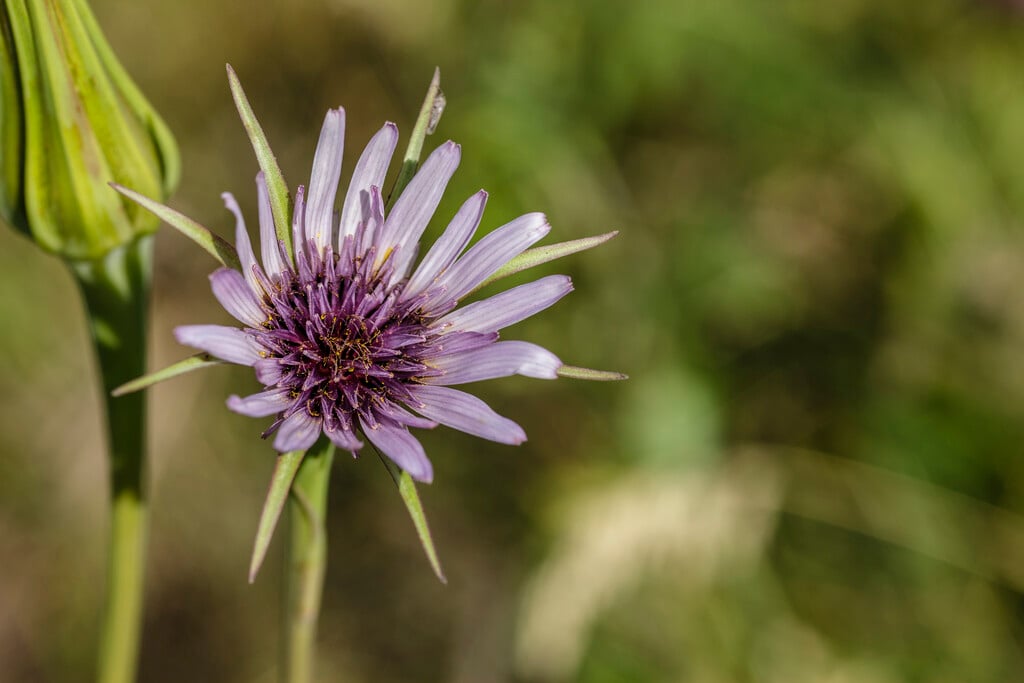Tragopogon porrifolius
salsify
A biennial herb up to1.2m tall with erect stem and 15-30cm long taproot. The stem and leaves are pale green and the leaves are linear with a grass-like in appearance. The young root is harvested in its first year and used as a vegetable. If left to flower, it will produce decorative, purple-pink round flowers resembling dandelions, 3-5cm in diameter
Other common names
oyster rootpurple goat's beard
see morevegetable oyster
Jerusalem star
oyster plant
Size
Ultimate height
0.5–1 metresTime to ultimate height
1–2 yearsUltimate spread
0.1–0.5 metresGrowing conditions
Moisture
Moist but well–drainedpH
Acid, Alkaline, NeutralColour & scent
| Stem | Flower | Foliage | Fruit | |
| Spring | Green | |||
|---|---|---|---|---|
| Summer | Pink Purple | Green | ||
| Autumn | Pink Purple | Green | ||
| Winter |
Position
- Full sun
- Partial shade
Aspect
East–facing or North–facing or South–facing or West–facing
Exposure
Exposed or Sheltered Hardiness
H4Botanical details
- Family
- Asteraceae
- Native to GB / Ireland
- No
- Foliage
- Deciduous or Semi evergreen
- Habit
- Columnar upright
- Genus
Tragopogon can be annuals or herbaceous perennials with grass-like linear leaves and large, dandelion-like yellow or purple flowerheads in summer
- Name status
Correct
- Plant range
- Mediterranean
How to grow
Cultivation
Grow in deep, light, free-draining soil in full sun. Can be naturalised in meadow, grown as ornamental or cultivated for the edible root harvested in winter. See salsify cultivation for more advice
Propagation
Grow from seed sown outdoors in late spring
Suggested planting locations and garden types
- Cottage and informal garden
- Flower borders and beds
Pruning
No pruning required
Pests
Generally pest-free. Seedlings and young plants may be susceptible to slugs and snails
Diseases
Generally disease-free
Get involved
The Royal Horticultural Society is the UK’s leading gardening charity. We aim to enrich everyone’s life through plants, and make the UK a greener and more beautiful place.
